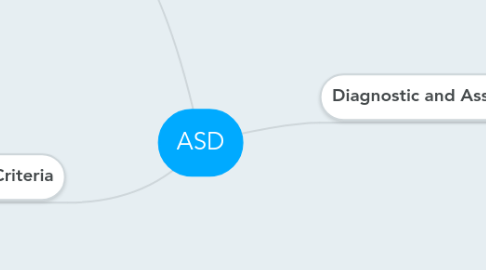
1. DSM-5 Diagnostic Criteria
1.1. Persistent deficits in social communication and social interaction across multiple contexts, as manifested by the following, currently or by history (examples are illustrative, not exhaustive, see text):
1.1.1. Deficits in social-emotional reciprocity, ranging, for example, from abnormal social approach and failure of normal back-and-forth conversation; to reduced sharing of interests, emotions, or affect; to failure to initiate or respond to social interactions.
1.1.2. Deficits in nonverbal communicative behaviors used for social interaction, ranging, for example, from poorly integrated verbal and nonverbal communication; to abnormalities in eye contact and body language or deficits in understanding and use of gestures; to a total lack of facial expressions and nonverbal communication.
1.1.3. Deficits in developing, maintaining, and understanding relationships, ranging, for example, from difficulties adjusting behavior to suit various social contexts; to difficulties in sharing imaginative play or in making friends; to absence of interest in peers.
2. Online Tools
2.1. Toddler:http://autismcanada.org/about-autism/diagnosis/screening-tools/toddler/
2.2. Child:http://autismcanada.org/about-autism/diagnosis/screening-tools/child/
2.3. Teen: http://autismcanada.org/about-autism/diagnosis/screening-tools/teen/
2.4. Adult: http://autismcanada.org/about-autism/diagnosis/screening-tools/adult/
3. Diagnostic and Assessment Instruments
3.1. Diagnostic Assessment
3.1.1. Autism Diagnostic Interview - Revised
3.1.2. Prelinguistic Autism Diagnostic Observation Schedule
3.1.3. Childhood Autism Rating Scale
3.1.3.1. CARS examines fifteen categories of behaviors, characteristics, and abilities against the expected development of typical children to determine whether autistic symptoms are present. The categories evaluated are as follows:
3.1.3.1.1. Relating to people
3.1.3.1.2. Imitation
3.1.3.1.3. Emotional response
3.1.3.1.4. Body use
3.1.3.1.5. Object use
3.1.3.1.6. Adaptation to change
3.1.3.1.7. Visual response
3.1.3.1.8. Listening response
3.1.3.1.9. Taste, smell, and touch response and use
3.1.3.1.10. Fear or nervousness
3.1.3.1.11. Verbal communication
3.1.3.1.12. Nonverbal communication
3.1.3.1.13. Activity level
3.1.3.1.14. Level and consistency of intellectual response
3.1.3.1.15. General impressions
3.1.4. Autism Behaviour Checklist
3.1.5. Checklist for Autism in Toddlers
3.1.6. Real Life Rating Scale
3.1.7. Pervasive Developmental Disorder Screening Test
3.1.8. Autism Screening Instrument for Educational Planning (2nd ed.)
3.1.9. Diagnostic Checklist for Behavior-Disturbed Children (Form E-2)
3.1.10. Gilliam Autism Rating Scale
3.2. Developmental Assessment
3.2.1. Psychoeducational Profile-Revised
3.2.2. Southern California Ordinal Scales of Development
3.2.3. Developmental Play Assessment Instrument
3.2.4. Brigance Inventory of Early Development
3.3. Adaptive Assessment
3.3.1. Vineland Adaptive Behavior Scales
3.4. Communication Assessment
3.4.1. Sequenced Inventory of Communication Development (Rev. ed.)
3.4.2. The Nonspeech Test for Receptive/Expressive Language
3.4.3. Assessing Semantic Skills Through Everyday Themes
3.4.4. Expressive One-Word Picture Vocabulary Test CRev. ed.)
3.4.5. Receptive One-Word Picture Vocabulary Test (Rev. ed.)
3.4.6. Clinical Evaluation of Language Fundamentals – Preschool
3.4.7. ECOScales
3.4.8. Peabody Picture Vocabulary Test (III)
3.4.9. Reynell Developmental Language Scales
3.4.10. Preschool Language Scale (3rd ed.)
3.5. Infant/Toddler Assessment
3.5.1. Bayley Scales of Infant Development (2nd ed.)
3.5.2. Mullen Scales of Early Learning
3.5.3. Early Coping Inventory
3.6. Standardized Tests of Intelligence
3.6.1. Wechsler Preschool and Primary Scale of Intelligence (Rev. ed.)
3.6.2. Wechsler Intelligence Scale for Children (3rd ed.)
3.6.3. Differential Ability Scales
3.6.4. Stanford-Binet Intelligence Scale (4th ed.)
3.7. Tests of NonVerbal Intelligence
3.7.1. Columbia Mental Maturity Scale (3rd ed.)
3.7.2. Merrill-Palmer Scale of Mental Tests
3.7.3. Leiter International Performance Scale
3.7.4. Test of Nonverbal Intelligence (2nd ed.)
3.8. Academic Screening
3.8.1. Wide Range Achievement Test 3 (WRAT3)
3.9. Behaviour Assessment
3.9.1. Achenbach Child Behavior Checklist
3.9.2. Analysis of Sensory Behavior Inventory (Rev. ed.)
3.10. Family Assessment
3.10.1. Behavioral Vignettes Test
3.10.2. Parenting Satisfaction Scale
3.10.3. Parenting Stress Index (3rd ed.)
3.10.4. The Parental Stress Scale
3.10.5. Questionnaire on Resources and Stress
3.10.6. Family Adaptability and Cohesion Evaluation Scales III
3.10.7. Family Assessment Interview
3.10.8. Child Improvement Locus of Control Scale
3.10.9. Family Environmental Scale
3.11. Other Assessment Options
3.11.1. Standardized videotape assessment
3.11.2. Complete medical examination
3.11.3. Audiometric assessment

